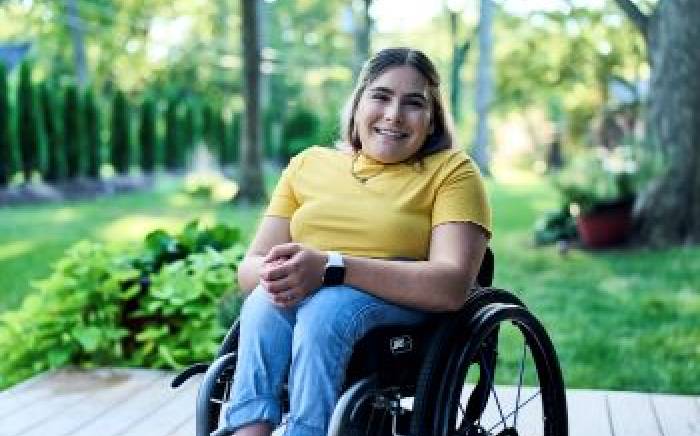 In July of 2021, Lucas Parato was born in Chicago to parents Angelo and Ashley. When Lucas was only a few days old, the two began questioning whether their son’s skull shape was normal.
In July of 2021, Lucas Parato was born in Chicago to parents Angelo and Ashley. When Lucas was only a few days old, the two began questioning whether their son’s skull shape was normal.
For the next two months, the doctors kept an eye on his development until it was clear that he had a complex case of craniosynostosis, a birth defect in which the bones in a baby's skull join together too early causing a misshapen head. He had developed a Mercedes Benz skull pattern which is a very rare form of craniosynostosis.
St. Louis Children’s had a treatment plan that Lucas’ family felt was right for him.
During his initial consultation at a hospital in Chicago, it was suggested Lucas undergo a two-stage operation with an intensive first surgery (including an ICU stay and a blood transfusion). That operation requires an open repair where an incision is made from ear to ear and a metal device is inserted into the skull. The device needs to be turned daily by the family for an entire month and is followed by another surgery to remove the metal device.
This was a very overwhelming option to consider for Angelo and Ashley, and they began to feel frustrated by how long the process was taking. Lucas’ grandparents live in the St. Louis area and suggested a second opinion from St. Louis Children’s Hospital. At just under three months old, Lucas had a consultation with Washington University Plastic Surgeon, Dr. Kamlesh Patel, and Washington University Neurosurgeon, Dr. Jennifer Strahle.
Dr. Patel and Dr. Strahle offered the family a less invasive endoscopic repair that only requires a few small incisions followed by wearing a helmet until his first birthday, which would allow Lucas’ skull to grow naturally into the correct shape. “Right away we felt at ease during a scary time,” says Ashley.
Lucas was able to be scheduled for surgery one week later. In the meantime, Angelo and Ashley met with a specialist from the Chicago area who would be creating the helmets for Lucas and stay in communication with Dr. Patel. This coordination of care meant that the family wouldn’t need to travel back and forth to St. Louis every month. Lucas could get monthly care close to home, while still benefiting from the expertise from Children’s via telemedicine.
“We couldn’t be more put at ease with the timing and urgency that was put into this, and the attention we received right away knowing how critical this was,” says Angelo.
In October of 2021, Lucas underwent the endoscopic repair and was able to return home the next day.
The team at Children’s sees approximately 40 craniosynostosis cases a year, half of which are from patients beyond the St. Louis region. Of those cases, the majority choose to undergo the minimally invasive endoscopic repair.
St. Louis Children’s has become one of the leading hospitals in craniosynostosis care after becoming an early adopter of the minimally invasive approach back in 2006, offering all types of synostosis if patients meet the criteria. Most hospitals in the region only offer limited options.
The team at St. Louis Children’s has published over 50 papers on this form of treatment over the past 10 years. In the most recent publishing, they have shown that minimally invasive (endoscopic) repair offers better results than open repair considering that minimally invasive procedures tend to decrease blood loss, require fewer hospital stays, lower medical costs and offer less discomfort.
Lucas and his twin brother Dylan turned one year old in July, and his parents are thrilled with his progress. Angelo and Ashley couldn’t be more thankful for the care that they received at St. Louis Children’s. “It was the best decision we ever made,” says Ashley.









